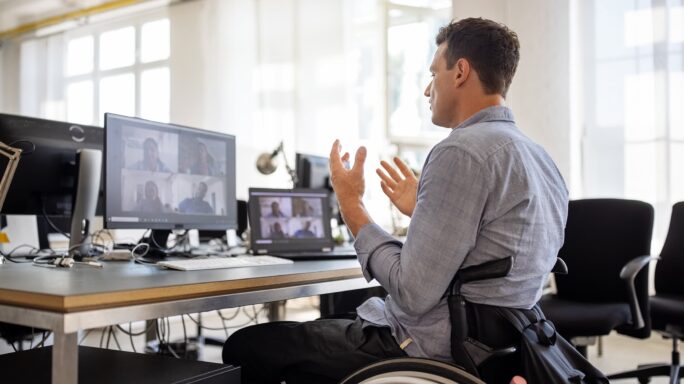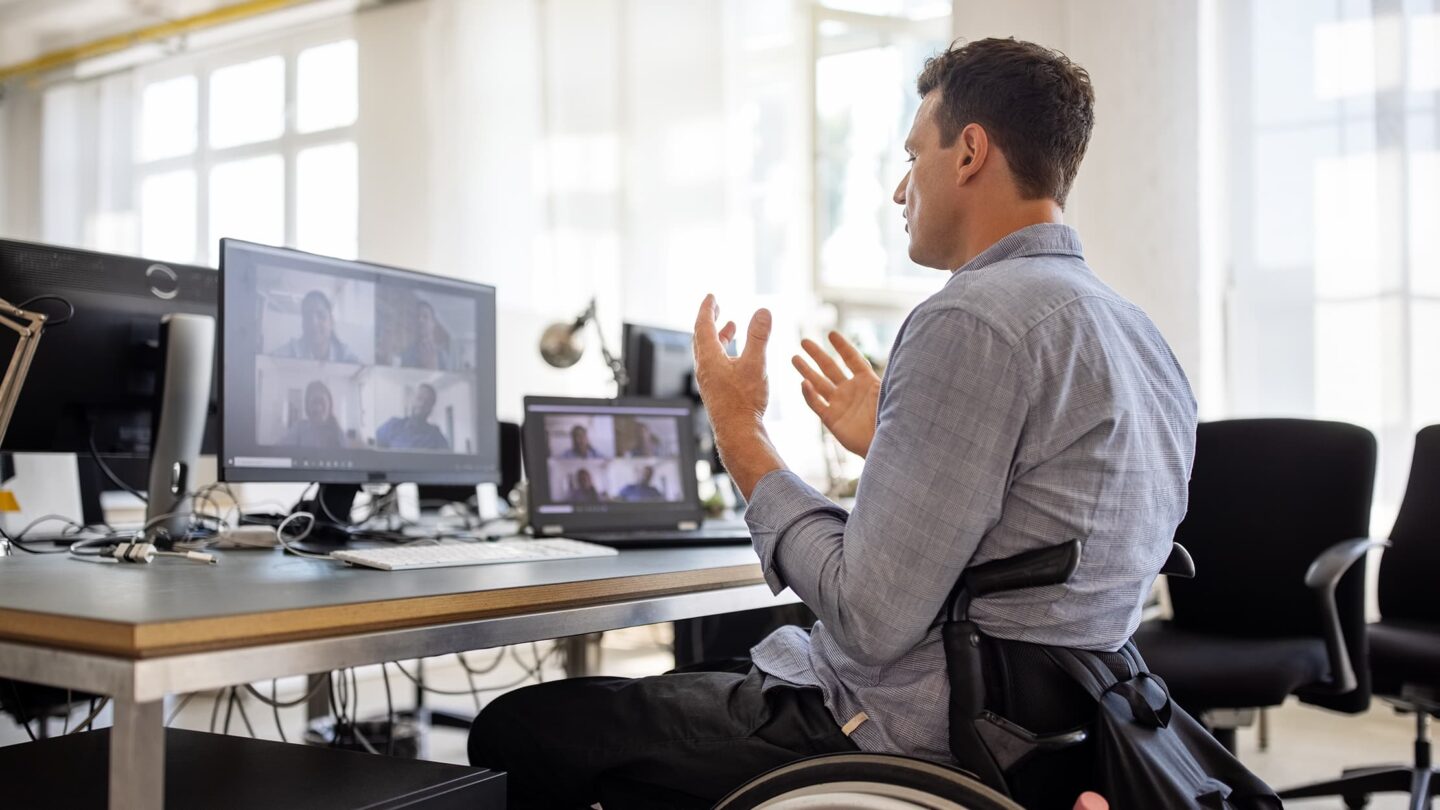Accessibility
A day in the life of an Accessibility Auditor at Sage

My name is Claire Farndale, and I am the Accessibility Auditor for Sage.
In this article, I will share the day-to-day tasks in my role as an Accessibility Auditor to highlight how we, at Sage, are assessing accessibility within the business. I will share the processes involved, the tasks I complete, and what I look for to ensure that all our products and services are meeting accessibility needs as part of our promise as a business.
Defining the scope of work
When I am assigned a Sage product to audit, I set up a meeting with stakeholders to discuss several pieces of criteria. The first is what they know about accessibility, and why it is important to Sage. I then brief the stakeholders on the current WCAG guidelines (2.1 AA).
These are guidelines that we have also used to create our own internal accessibility checklist which our product design and development teams use to create experiences for our customers.
We then work collaboratively to define the scope of the audit. This might be a strategic path to navigate through the system or a full audit of every page and component.
Some of the questions I will ask stakeholders might include:
- How many environments do I need to target? For example, do we need to consider a Windows based PC only, or a Mac running MacOS?
- Do I need to consider devices and test on tablets, both Android and iOS, or mobile phone?
- Which browsers should I test, or which assistive tech do they want to test with? For example, PC, NVDA and Firefox, or PC, JAWS, Chrome, or VoiceOver and Safari.
- Where will I be running the audit? Will it be in a specific test environment, or will it be in a pre-production environment?
It is important to have a defined scope because the audit will produce actionable results. I then brief the stakeholders on the types of tests I will be running and why it is important to run both automated and manual types of tests.
Automated test tools will only uncover approximately 40% of your accessibility issues – the other 60% are found by a combination of manual tests.
Product walkthroughs
Once the scope of work is defined and signed off, I then move onto the next stage of the audit which carrying out a walkthrough of the product.
Wherever possible I ask the demonstrator if I can record the session so I can refer to it when I’m conducting the actual bulk of the audit. I will then make notes and ask any additional questions. In these sessions I note down the critical paths a user may take when using the product that I am auditing, which helps form the basic outline of my report.
Once my user credentials are set up, I check I can login successfully to the environment, and then note the date so I can add this to my report. It’s beneficial to know the dates you have conducted audits, as these provide a snapshot in time for which you can use to compare your base line results. For example, you may carry out the first audit of a product, followed by another audit 3-6 months later. During that period, you should see improvements made and the bug count decrease.
Carrying out audits
This is where the fun begins. I test the product for as many accessibility bugs as possible with an audit. This sometimes also includes functional bugs masquerading as accessibility bugs. When I find a bug, I will either export the error or take a screen shot to add it into my report, depending on the type of test I’m running.
Once all the testing is complete, I collate all my results, categorise the errors found, and report back my findings to the stakeholders.
I love my job and love the fact Sage has given me the opportunity to embrace my passion to make Sage products both internally and externally accessible to everyone. We have a journey ahead of us but by working together with everyone within the Sage family, I know we will succeed. After all, accessibility is for everyone.
Find out more about what we’re doing at Sage to ensure that our goals are met to make products and services accessible by 2025. Visit our Sage accessibility hub for more information on accessibility statements for our products, colleague training, and guidance for introducing accessibility best practise into your business.





